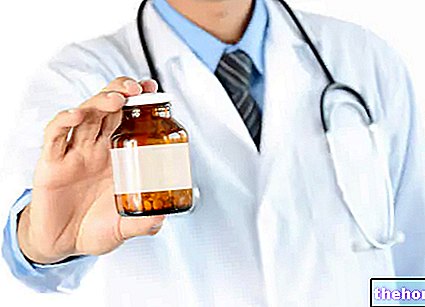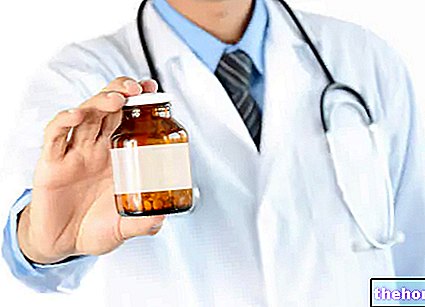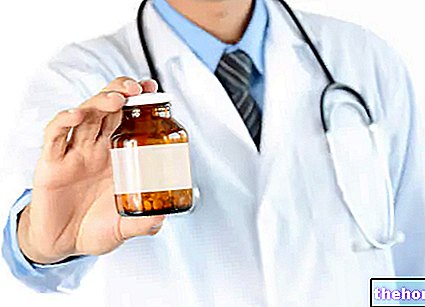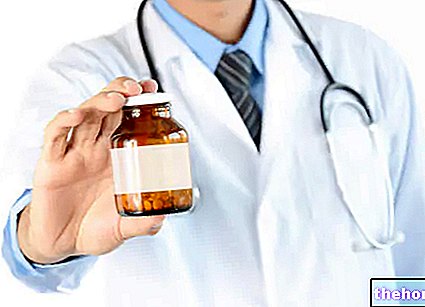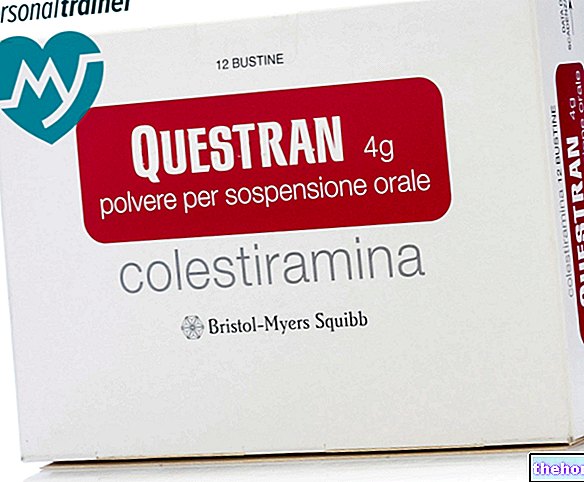Active ingredients: Liothyronine (Liothyronine sodium)
LIOTIR 5 micrograms / ml oral solution
LIOTIR 10 micrograms / ml oral solution
LIOTIR 15 micrograms / ml oral solution
LIOTIR 20 micrograms / ml oral solution
Indications Why is Liotir used? What is it for?
LIOTIR contains the active ingredient liothyronine sodium (T3), a thyroid hormone of synthetic origin, whose structure and action are identical to the natural thyroid hormone.
LIOTIR is used in case of absence or reduced function of the thyroid gland (treatment of hypothyroidism) due to various causes.
Contraindications When Liotir should not be used
Do not take LIOTIR:
- if you are allergic to liothyronine sodium or any of the other ingredients of this medicine (listed in section 6);
- if you have or have ever had high levels of thyroid hormones in the blood (thyrotoxicosis);
- if you have severe heart problems (uncompensated heart failure)
Precautions for use What you need to know before taking Liotir
Talk to your doctor or pharmacist before taking LIOTIR:
- if you have or have suffered from heart problems: heart attack, acute chest pain (angina pectoris), inflammation of the heart tissue (myocarditis), impaired heart function with increased beats above normal (heart failure with tachycardia);
- if you have or have suffered from increased blood pressure (arterial hypertension);
- if you have other pathologies that can reduce, in particular, the functionality of the pituitary and adrenal glands;
- if you are pregnant or breastfeeding.
Pay special attention
If you experience abnormal liver tests, fever or muscle weakness while taking LIOTIR, stop treatment and contact your doctor. If you have problems with your heart vessels (coronary heart disease) and need to have surgery, please tell your doctor. your treatment with LIOTIR LIOTIR should not be used for weight loss.
Interactions Which drugs or foods can modify the effect of Liotir
Tell your doctor or pharmacist if you are taking, have recently taken or might take any other medicines, including non-prescription medicines (such as over-the-counter medicines).
Some medicines may interfere with your treatment. Tell your doctor if you are taking:
- drugs that lower blood sugar (insulin or oral hypoglycemic agents);
- drugs that thin the blood (anticoagulants);
- drugs that stimulate the nervous system that mainly affect the heart and blood vessels (sympathomimetic amines);
- drugs that lower blood cholesterol (cholestyramine);
- drugs against seizures (antiepileptics such as: carbamazepine, phenobarbital, phenytoin, primidone);
- barbiturates (drugs with sedative and hypnotic effect);
- drugs against fungal infections (griseofulvin);
- drugs against tuberculosis (rifampicin, ethionamide);
- iron (ferrous sulphate). If you are taking any of the medicines listed above, your doctor may prescribe another medicine or adjust the dose of LIOTIR or the other medicine.
Warnings It is important to know that:
Pregnancy, breastfeeding and fertility
If you are pregnant or breast-feeding, think you may be pregnant or are planning to have a baby, ask your doctor for advice before taking this medicine.
If you become pregnant and are being treated with LIOTIR, please inform your doctor who will be able to evaluate whether to modify your therapy.
Driving and using machines
LIOTIR does not affect the ability to drive or use machines. LIOTIR contains: 28.8 vol% ethanol (alcohol), each single-dose container contains 233 mg of ethanol (ethyl alcohol), equivalent to 5.8 ml of beer, 2.4 ml of wine. It can be harmful to alcoholics. To be taken into consideration in pregnant or lactating women, children and high-risk groups, such as people with liver disease or epilepsy.
For those who carry out sporting activities, the use of medicines containing ethyl alcohol can determine positive doping tests in relation to the alcohol concentration limits indicated by some sports federations.
Dose, Method and Time of Administration How to use Liotir: Posology
Always take this medicine exactly as your doctor has told you, who will work out the correct dose based on your personal condition and your blood thyroid hormone levels. If in doubt, consult your doctor or pharmacist.
Adults
The starting dose is 10-20 micrograms per day. This dose can be gradually increased up to the maximum daily dose of 80 - 100 micrograms.
Children and adolescents
The starting dose is 5 micrograms per day. Your doctor may consider gradually increasing this dose. In adolescents (12-18 years), the maximum daily dose is 60 micrograms.
Senior citizens
The starting dose is 5 micrograms per day. Your doctor may consider gradually increasing this dose.
Method of recruitment
Take LIOTIR with a little water, without mixing it with other medicines. You can use multiple single-dose containers to reach the prescribed dose. Always take the entire contents of the containers, immediately after opening.
Your doctor may instruct you to take your daily dose, even divided into 2 or 3 doses.
If you forget to take LIOTIR
Do not take a double dose to make up for a forgotten previous dose. Take the next dose directly, as prescribed.
If you stop taking LIOTIR
Do not stop treatment without consulting your doctor.
Overdose What to do if you have taken too much Liotir
If you take more LIOTIR than you should, you may experience the following symptoms: chest pain, changes in your heart beat (arrhythmias), feeling of heart in your throat (palpitations), increased blood pressure, involuntary twitching of muscles, tremors. In this case, contact your doctor or the nearest hospital immediately.
Side Effects What are the side effects of Liotir
Like all medicines, LIOTIR can cause side effects, although not everybody gets them.
Tell your doctor immediately if you experience the following symptoms:
Common side effects (may affect up to 1 in 10 people)
Increased heart rate (tachycardia), feeling of heart in the throat (palpitations).
Hot flashes, sweating.
Headache (headache), difficulty falling asleep (insomnia), excitability, tremors.
Uncommon side effects (may affect up to 1 in 100 people)
Changes in heart beat (arrhythmias), increased blood pressure, chest pain (chest pain).
Muscle twitching (muscle spasms), muscle weakness.
Irregular menstruation.
Fever, diarrhea, weight loss.
Reporting of side effects
If you get any side effects, including any possible side effects not listed in this leaflet, contact your doctor or pharmacist. You can also report side effects directly via the national reporting system at “www.agenziafarmaco.gov.it/it/responsabili.” By reporting side effects you can help provide more information on the safety of this medicine.
Expiry and Retention
Keep this medicine out of the sight and reach of children.
Store below 25 ° C.
After opening the protective bag, the single-dose containers must be used within 15 days. After this period, any remaining containers must be discarded.
The solution must be used immediately and entirely after opening the single-dose container. Any residual solution must be discarded.
Do not use this medicine after the expiry date which is stated on the package after EXP. The expiry date refers to the last day of the month.
Do not throw any medicines via wastewater or household waste. Ask your pharmacist how to throw away medicines you no longer use. This will help protect the environment.
Deadline "> Other information
What LIOTIR contains
The active ingredient is liothyronine sodium.
Each single-dose container of 5, 10, 15, 20 micrograms contains: 5, 10, 15, 20 micrograms of liothyronine sodium.
The other ingredients are 96 percent ethanol, 85 percent glycerol.
Description of what LIOTIR looks like and contents of the pack
This medicine is an oral solution, available in non-transparent single-dose polyethylene containers of 5, 10, 15, 20 micrograms.
Each assay is identified by a different color:
- green for Liotir 5 micrograms / ml oral solution;
- blue for Liotir 10 micrograms / ml oral solution;
- orange for Liotir 15 micrograms / ml oral solution;
- red for Liotir 20 micrograms / ml oral solution.
Each pack contains 30 single-dose containers, divided into 5 bags of 6 containers each.
Source Package Leaflet: AIFA (Italian Medicines Agency). Content published in January 2016. The information present may not be up-to-date.
To have access to the most up-to-date version, it is advisable to access the AIFA (Italian Medicines Agency) website. Disclaimer and useful information.
01.0 NAME OF THE MEDICINAL PRODUCT -
LIOTIR
02.0 QUALITATIVE AND QUANTITATIVE COMPOSITION -
Liotir 20 mcg / ml oral drops, solution
One ml of solution contains
Active principle: liothyronine sodium 20 mcg
(1 ml is equal to 28 drops)
(1 drop contains 0.71 mcg of liothyronine sodium)
Liotir 5 mcg / ml oral solution
One single-dose container contains
Active principle: liothyronine sodium 5 mcg
Liotir 10 mcg / ml oral solution
One single-dose container contains
Active principle: liothyronine sodium 10 mcg
Liotir 15 mcg / ml oral solution
One single-dose container contains
Active principle: liothyronine sodium 15 mcg
Liotir 20 mcg / ml oral solution
One single-dose container contains
Active principle: liothyronine sodium 20 mcg
Excipient with known effect: 96 percent ethanol (243 mg).
For the full list of excipients, see section 6.1.
03.0 PHARMACEUTICAL FORM -
Oral drops, solution
Oral solution
04.0 CLINICAL INFORMATION -
04.1 Therapeutic indications -
States of hypothyroidism of various origins.
04.2 Posology and method of administration -
Dosage
The doses and duration of therapy must be customized by the physician according to the needs of the individual patient.
The correspondence between the dose expressed in mcg and the volume of solution to be administered of the available formulations of Liotir is reported below.
The recommended dosage schedule is as follows.
When immediate effect is not needed, start treatment with doses of 10 to 20 micrograms of liothyronine sodium per day.
The starting dose can be gradually increased up to a maximum total daily dose of 80-100 mcg of liothyronine sodium, corresponding to 112 - 140 drops, to be reached in 1-2 weeks.
Intermediate dosages can be obtained considering that 1 drop of the pack in oral drops, solution contains approximately 0.71 mcg of sodium liothyronine.
When compatible with the prescribed dosage, single-dose containers can be used.
The daily doses indicated can also be divided into two or three administrations per day, depending on the specific pathology and individual therapy.
These doses are normally sufficient to obtain an initial therapeutic effect, but for the continuation of therapy the administration of sodium levothyroxine or the setting of a combined therapy of liothyronine / levothyroxine is indicated, taking into account that in hypothyroidism resistant to thyroid extract and levothyroxine sodium, liothyronine sodium is irreplaceable.
Special populations
Pediatric patients
The initial dose of liothyronine sodium is 5 mcg per day, corresponding to 7 drops. This dose can be gradually increased until the euthyroid state is reached (generally reached with dosages between 0.4 and 0.8. mcg / kg), obtained which requires replacement with sodium levothyroxine or the setting of a combined therapy of liothyronine / levothyroxine.
In adolescents aged 12 to 18 years, oral doses similar to those used for adults can be given and the dose can be gradually increased up to 60 micrograms per day given in 2-3 doses.
For administrations of less than 20 mcg it is recommended to use the oral drops, solution formulation in order to minimize the amount of ethanol ingested by the child.
Elderly patients
The starting dose of liothyronine sodium is 5 mcg per day. This dose can be gradually increased until reaching the state of euthyroidism, obtained which requires the replacement with sodium levothyroxine or the setting of a combined therapy of liothyronine / levothyroxine.
Method of administration
Oral drops, solution
Before administering the medicine, test the proper functioning of the dropper by taking the solution from the bottle and checking the delivery of the drops. To correctly dose the medicine, keep the dropper in an upright position.
Take the drops diluted in a little water.
Oral solution
Take the contents of the single-dose container diluted with a little water.
The contents of the single single-dose container must be taken entirely and must not be divided into several doses.
04.3 Contraindications -
Hypersensitivity to the active substance or to any of the excipients listed in section 6.1.
Thyrotoxicosis.
Uncompensated heart failure.
04.4 Special warnings and appropriate precautions for use -
In case of myocardial infarction, angina pectoris, myocarditis, heart failure with tachycardia, arterial hypertension, the medicine should be used with caution and under strict medical supervision.
In addition, patients with the above cardiovascular diseases who are taking sympathomimetic amines should be kept under close medical observation (see section 4.5).
In patients with hypothyroidism complicated by cardiac pathologies, too rapid regularization of the metabolic situation can lead to serious complications; in such subjects it is essential to increase the daily dosage according to a rigorous graduality. Coronary heart disease patients treated with thyroid hormones should be carefully monitored during surgery as the likelihood of cardiac arrhythmias increases in these cases.
In the initial stages of therapy with Liotir, diabetic patients treated with insulin or oral hypoglycemic agents and patients on anticoagulant therapy, must be carefully monitored for parameters relating to glycemia and coagulation indices to highlight any phenomena of interaction with liothyronine and adapt the daily dosage of these medicinal products (see section 4.5).
Rare cases of hepatic dysfunction have been reported in subjects treated with thyroid hormones; it is therefore recommended to reduce the dosage or to discontinue treatment if laboratory test abnormalities for liver function, fever or muscle weakness appear during therapy with Liotir.
Patients with panhypopituitarism or other predisposing causes of adrenal insufficiency may react unfavorably to liothyronine; therefore it is advisable to start corticosteroid therapy prior to treatment with Liotir.
Liothyronine should not be administered for weight reduction and the treatment of obesity. The therapeutic doses indicated in section 4.2 are not effective for weight reduction; higher doses can cause severe reactions that can be life-threatening. patient, particularly in the case of association with sympathomimetic amines used for anorectic purposes.
Important information about some of the ingredients of Liotir
This medicinal product contains 28.8 vol% ethanol (alcohol). 1 ml of solution contains 0.233 g of ethanol, equivalent to 5.8 ml of beer, 2.4 ml of wine. It can be harmful to alcoholics.
To be taken into consideration in pregnant or lactating women, children and high-risk groups, such as people with liver disease or epilepsy.
04.5 Interactions with other medicinal products and other forms of interaction -
Insulin or oral hypoglycemic agents
Liothyronine may reduce the hypoglycemic effect of these drugs. Therefore, especially at the beginning of therapy with liothyronine, the blood glucose level should be regularly monitored in diabetic patients, possibly adjusting the dosage of the hypoglycemic drug (see section 4.4).
Oral anticoagulants
Liothyronine can lead to an enhancement of the effect of oral anticoagulants with an increased risk of haemorrhage (due to an increase in the metabolism of coagulation factors). At the beginning of therapy with liothyronine it is necessary to regularly check the coagulation parameters and possibly adapt the anticoagulant dosage. (see section 4.4).
Cholestyramine and ferrous sulfate
Cholestyramine and ferrous sofato can reduce the activity of thyroid hormones (by reducing intestinal absorption). It is recommended to take liothyronine at least 1 hour before taking cholestyramine and ferrous sulphate.
Enzyme inducers
Antiepileptics (carbamazepine, phenobarbital, phenytoin, primidone), barbiturates, griseofulvin, rifampicin, ethionamide increase the metabolism of thyroid hormones (by increasing the hepatic clearance of thyroid hormones). Patients on thyroid replacement therapy may require a dose adjustment of liothyronine.
Intravenous diphenylhydantoin should not be administered during treatment with Liotir.
Sympathomimetics
Patients suffering from heart disease treated with thyroid hormones should be carefully observed when concomitantly administered catecholamines, due to the potentiation of the effect of the latter drugs (see section 4.4).
04.6 Pregnancy and breastfeeding -
Pregnancy
Liothyronine does not cross the placenta easily.
The use of Liotir in the treatment of hypothyroidism in pregnancy is not recommended as it does not guarantee the adequate supply of thyroid hormone to the fetus.
If hypothyroidism is diagnosed during pregnancy, oral levothyroxine sodium therapy should be initiated.
Feeding time
Although only small amounts of thyroid hormones are distributed in breast milk, these should be used with caution in breastfeeding women.
The alcohol content of this medicinal product should be considered before using it during pregnancy or lactation (see section 4.4 Special warnings and precautions for use).
04.7 Effects on ability to drive and use machines -
Liotir does not affect the ability to drive or use machines.
04.8 Undesirable effects -
Undesirable effects are usually indicative of excessive dosage and disappear when the daily dosage is reduced or treatment is stopped for a few days. These are more frequent at the start of therapy.
Adverse drug reactions are listed below by System Organ Class (using MedDRA terminology) and by the following frequency: very common (≥1 / 10); common (≥1 / 100,
Reporting of suspected adverse reactions
Reporting of suspected adverse reactions that occur after authorization of the medicinal product is important, as it allows continuous monitoring of the benefit / risk ratio of the medicinal product.
Healthcare professionals are asked to report any suspected adverse reactions via the national reporting system at www.agenziafarmaco.gov.it/it/responsabili.
04.9 Overdose -
Acute overdose of thyroid hormones can generally produce symptoms typical of hyperthyroidism. In this case, appropriate symptomatic and supportive therapy should be instituted immediately. Treatment consists mainly in reducing gastrointestinal absorption (induction of vomiting, gastric lavage) and in counteracting the central and peripheral effects, particularly those due to increased sympathetic activity.
05.0 PHARMACOLOGICAL PROPERTIES -
05.1 "Pharmacodynamic properties -
Pharmacotherapeutic group: thyroid hormones, ATC code: H03AA02
The effects of the synthetic liothyronine contained in Liotir are identical to those determined by the thyroid hormone produced by the thyroid and physiologically present in the organism.
05.2 "Pharmacokinetic properties -
Absorption
Orally administered liothyronine sodium is almost completely absorbed from the gastrointestinal tract (approximately 95%).
Distribution
The distribution of thyroid hormones in tissues and biological fluids has not been fully characterized. The volume of distribution of liothyronine sodium ranges from 41 to 45 liters.
Circulating liothyronine is almost completely bound to plasma proteins. Levothyroxine sodium and liothyronine sodium are more than 99% bound to whey proteins. Levothyroxine is more firmly bound to plasma proteins than liothyronine; this justifies the higher plasma concentration and slower metabolic clearance.
Thyroid hormones hardly cross the placental barrier and are excreted in breast milk only in minimal quantities.
Biotransformation
The t½ of liothyronine is approximately 25 hours, with a slight increase in hypothyroidism and a modest reduction in hyperthyroidism. Liothyronine is metabolised predominantly in the liver by conjugation with glucuronic acid or sulfate, by deiodination to di-iodo and mono-iodo-thyronine, and also by deamination and decarboxylation.
Elimination
The excretion of liothyronine occurs mainly through bile and faeces and is subject to enteropathic recirculation. The free fraction and some of its metabolites are also found in the urine.
05.3 Preclinical safety data -
There is no information, deriving from preclinical data, of significant importance to the physician that has not already been reported in the sections of the Summary of Product Characteristics.
06.0 PHARMACEUTICAL INFORMATION -
06.1 Excipients -
96 percent ethanol; glycerol 85 percent.
06.2 Incompatibility "-
In the absence of compatibility studies, this medicinal product must not be mixed with other medicinal products.
06.3 Period of validity "-
Oral drops, solution
2 years
The shelf life of the medicine after opening the bottle is 30 days. After this period, any residual solution should be discarded.
Oral solution
18 months.
The shelf life of the medicine after opening the foil pouch is 15 days. After this period, any residual containers must be discarded.
The solution must be used immediately and entirely after opening the single-dose container. Any residual solution must be discarded.
06.4 Special precautions for storage -
Oral drops, solution
Store the medicine below 25 ° C. Use the medicine within 30 days of first opening the bottle. After this period, any residual solution must be eliminated.
Oral solution
Store the single-dose containers inside the unopened aluminum bag and at a temperature below 25 ° C. Use the single-dose containers within 15 days of first opening the aluminum bag. After this period, any residual containers must be discarded.
06.5 Nature of the immediate packaging and contents of the package -
Liotir 20 mcg / ml oral drops, solution
§ Glass bottle containing 20 ml of solution, sealed with a polypropylene cap and polyethylene gasket in contact with the medicine. The cap is removed after the first opening and the system consisting of a polypropylene capsule with a rubber gasket / pump / glass dropper is screwed in its place.
Liotir 5 mcg / ml oral solution
§ Packaging containing 30 single-dose containers of PE divided into 6 strips of 5 containers individually packaged in a PET / Alu / PE bag coupled. Dosage identified by the green color.
Liotir 10 mcg / ml oral solution
§ Packaging containing 30 single-dose containers of PE divided into 6 strips of 5 containers individually packaged in a PET / Alu / PE bag coupled. Assay identified by the blue color.
Liotir 15 mcg / ml oral solution
§ Packaging containing 30 single-dose containers of PE divided into 6 strips of 5 containers individually packaged in a PET / Alu / PE bag coupled. Dosage identified by the orange color.
Liotir 20 mcg / ml oral solution
§ Packaging containing 30 single-dose containers of PE divided into 6 strips of 5 containers individually packaged in a PET / Alu / PE bag coupled. Dosage identified by the red color.
Not all pack sizes may be marketed.
06.6 Instructions for use and handling -
No special instructions.
Unused medicine and waste derived from this medicine must be disposed of in accordance with local regulations.
07.0 HOLDER OF THE "MARKETING AUTHORIZATION" -
IBSA Farmaceutici Italia S.r.l., Via Martiri di Cefalonia, 2, 26900 Lodi.
08.0 MARKETING AUTHORIZATION NUMBER -
Liotir 20 mcg / ml oral drops, solution - 1 bottle of 20 ml AIC: 036906016
Liotir 5 mcg / ml oral solution - 30 single-dose containers of 1 ml AIC: 036906028
Liotir 10 mcg / ml oral solution - 30 single-dose containers of 1 ml AIC: 036906030
Liotir 15 mcg / ml oral solution - 30 single-dose containers of 1 ml AIC: 036906042
Liotir 20 mcg / ml oral solution - 30 single-dose containers of 1 ml AIC: 036906055
09.0 DATE OF FIRST AUTHORIZATION OR RENEWAL OF THE AUTHORIZATION -
Oral drops, solution
Date of first authorization: 29 December 2006
Date of most recent renewal: December 29, 2011
Oral solution
Date of first authorization: 15 May 2015
10.0 DATE OF REVISION OF THE TEXT -
15 May 2015

